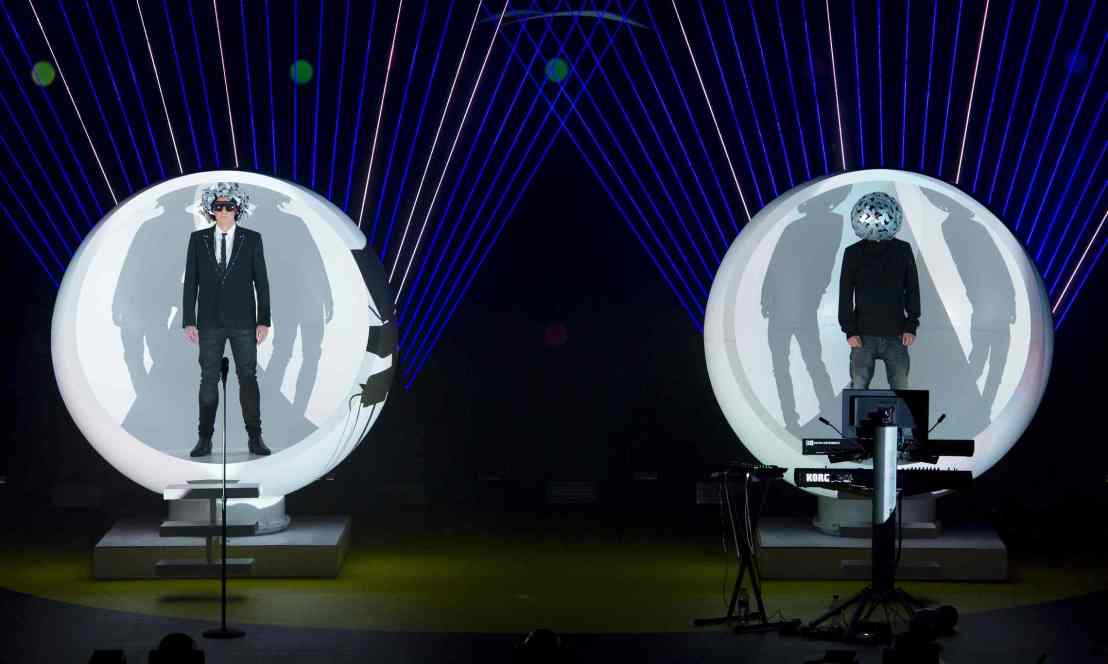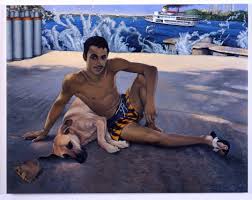Royal Opera House, London

It’s not often that the Royal Opera House throws open its doors to a pop band. In the past Björk, Antony and the Johnsons andRufus Wainwright have appeared in the hallowed space usually reserved for Parsifaland Carmen — though those artists have made no secret of their classical pretensions.
The hi-NRG hits of the Pet Shop Boys require no operatic embellishment, although Neil Tennant and Chris Lowe, disco’s Gilbert and George, are notable for bringing high-mindedness to a hedonistic medium. They were doing art-pop long before Lady Gaga was hatched, and are probably the only mainstream pop act that could get away with a song called “Love Is a Bourgeois Construct”.
Their latest show, titled Inner Sanctum, arrives four months after the release of their 13th album Super , which harks back to their late-1980s heyday and is as close to a perfect Pet Shop Boys album as you could wish for.
If the idea of a 61-year-old man in a sharp suit singing “Pop Kids” against a 1990s house groove seems faintly ridiculous, the reality is nothing less than thrilling. The Pet Shop Boys are no spring chickens, but 35 years in the business allows them to bring a level of style and craftsmanship to their performances that younger artists would kill for.
Understatement simply doesn’t feature in this Es Devlin-designed show that deals in primary colours and gives us criss-crossing lasers that bounce off the balconies, musicians in brushed chrome helmets and dancers gambolling in inflatable fat suits.
Elsewhere, high-definition images of billowing clouds, unfurling flowers and moving geometric shapes flank Tennant and Lowe as they move through a punchy setlist that weaves old classics such as “It’s a Sin”, “West End Girls” and “Left to My Own Devices” with newer numbers such as “The Dictator Decides”.
Just as startling is the joy emanating from Tennant himself (Lowe, as ever, barely twitches). While there’s a hint of Kraftwerk in the Pet Shop Boys’ robo-aesthetic — at the start they step out of spherical pods, each wearing sculptural headpieces — Tennant remains the twinkling face of electropop, removing the mask to reveal a delighted grin that doesn’t leave his face for the rest of the show.
Fiona Sturges in Financial Times

London’s Royal Opera House is a temple of high culture. The Pet Shop Boysare a class act: arty intellectuals celebrating more than 30 years’ experience of applying recherché ideas to the pop sphere. Set designer Es Devlin, meanwhile, straddles the worlds of theatre and pop with near-ubiquity. She stages actual operas; her other job this summer is the Rio Olympics opening ceremony.
The maths suggest that PSB x ROH x EsD would equal a run of shows vertiginously high in concept, tending towards the more pretentious end of the Pet Shop Boys’ oeuvre – the subsidiary that soundtracks ballets, for instance, or silent films with the Dresdner Sinfoniker, or publishes weighty tomes of their visual output, and not the core business that pumps out catchy disco. This particular tour production goes by the name Inner Sanctum, after the first track on their most recent album, one of those PSB titles, such as Elysium or Pandemonium, that chucks Latinate polysyllables around with nonchalance.
Anyway, that maths – a gross miscalculation, it turns out. Neil Tennant and Chris Lowe’s first night at the opera is awesomely unpretentious, while providing plenty of spectacle to chew over. They roll out the hits while strafing the place with rave lasers, bringing on a bodypopper in an opalescent suit (for New York City Boy) and dancers in inflatable fat suits for the grand finale.
“Tonight I am afraid there is no ballet or opera,” announces Tennant, “just pop music.”
Inevitably, some emphasis is placed on the Pet Shop Boys’ latest album, Super, out in the spring; four songs from a total of 22. This is no hardship, as Super is a poppy, clubby rush of a record, reconnecting the Boys with their youthful directness. The standout recent number is The Pop Kids, which restates the Pet Shop Boys’ allegiance to pop you can dance to, couching it in a nostalgic love story set in the 90s.
“We were young but we imagined we were so sophisticated,” sings Tennant, “Telling everyone we knew that rock was overrated.” Big cheers greet this line; Tennant beams and slaps his hip.
The Pet Shop Boys are generous with the classics, too. If anything, their bittersweet first hit, West End Girls, is dispatched a little too early. The evergreen anthem that receives all the lighting, effects and clap-alongs is It’s a Sin, a rumination on how everything worth doing is wrong in the eyes of organised religion, not least loving someone with similar genitals to your own.
Rarities turn up too, like In the Night, originally the B-side to the single Opportunities (Let’s Make Lots of Money), then the soundtrack to The Clothes Show, now a thumping track in which stagehands with headlamps roll on some additional band members.
Taking nothing away from Tennant and Lowe, who perform with typical arch understatement, the visuals really do lift the show. At the start, two big white orbs rotate to reveal the duo, one wearing a metal headdress, the other an iron mask crossed with a lampshade.
Headgear turns out to be a big feature. The Pet Shop Boys’ three auxiliary band members (two percussionists, a keyboard player) appear initially in helmets. For Inside a Dream, some silver-clad dancers come on stage, also helmeted, looking a little like a Venusian luge team. Even better is the fact that the luge team don’t actually dance, they merely shadow Neil Tennant in a slightly sinister fashion all the way through Winner. At the climax, around two dozen dancers in inflatable round suits (and kerchief masks) arrive for the superb Left to My Own Devices and a euphoric Go West; they fleetingly recall Missy Elliott in The Rain (Supa Dupa Fly), returning in the encore to act out the words of Always on My Mind, by which point we are putty in the Pet Shop Boys’ hands.
If we’re looking for a wider geometrical theme, Devlin offers up an array of circles, interspersed with the odd triangle, cut up by straight laser lines. In the act dubbed “Sun”, one giant ring of light suggests an eclipse; it turns into a disco ball for Love Is a Bourgeois Construct.
Whether this is intentional or not, it is hard to say, but Devlin seems to be playing with depth of field here, in a way that an arena show (a tour has just been announced for 2017) cannot.
Seemingly flat circles, you soon realise, are rings; a backdrop of bauble-y wallpaper gains heft when you realise how far back the stage goes and that the balloons are real. You might extrapolate that Inner Sanctum’s clever staging suggests that the Pet Shop Boys continue to bring colourful three-dimensionality to the often 2D world of pop. But that would be quite pretentious.
Kitty Empire in The Observer




